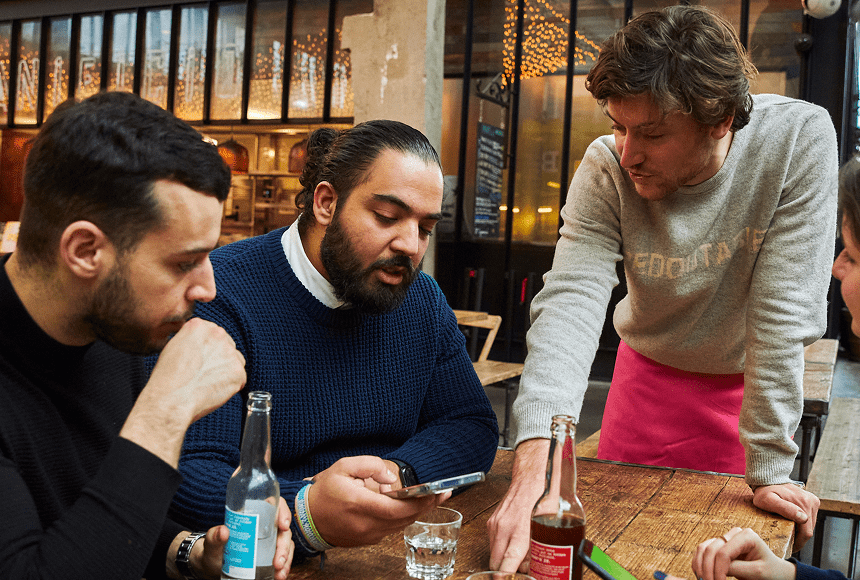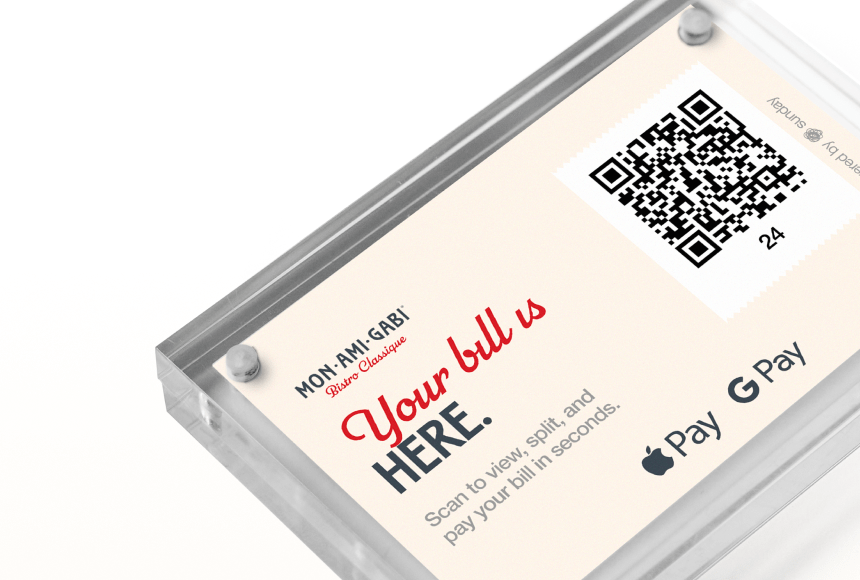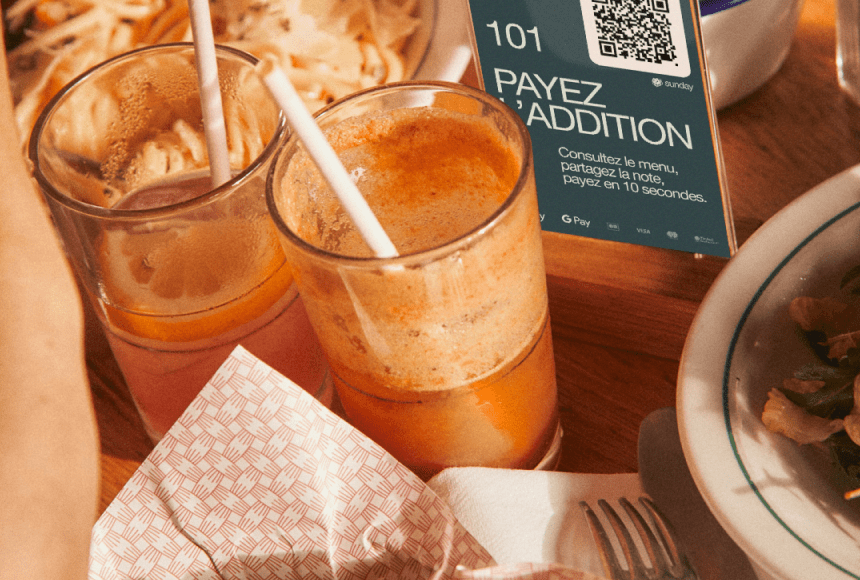
Stop Letting the Final Step Eat Away at Your Bottom Line
Understanding Payment Friction in a Restaurant Setting
Picture this: your guests have enjoyed a delightful meal. They’ve savored your signature dishes, bonded over good conversation, and leaned back in their chairs fully satisfied—until they decide to pay the bill. Then comes the wait. Your server scrambles to bring a card reader (or direct guests to the counter). Checks get passed around. Cards are swapped. Change is sorted out. In theory, it’s a small step. Yet this small step can be surprisingly disruptive.
“Payment friction” might sound like an abstract idea, but in practice, it’s every unnecessary pause or complication in the process of settling the check. When a guest must wait too long or deal with a clunky routine to pay, they leave with something short of the perfect end to an otherwise wonderful dining experience. More importantly, for you as a restaurant owner, payment friction can result in table turnover problems, lower tips, and fewer return visits.
Well-established industry reports—including those from the National Restaurant Association—indicate that more than 70% of diners factor convenience into their dining decisions. Meanwhile, a frictionless payment journey stands among the top drivers of a positive customer experience. If your payment process runs behind the times or simply takes too long, you could be turning away potential revenue without even realizing it.
When the Wait to Pay Takes a Bite Out of Your Profits
Have you noticed guests glancing impatiently at their watches, or searching the dining room for a staff member to bring the bill? That lingering wait doesn’t just test your customers’ patience. Those precious minutes can add up to bigger losses in several ways:
- Lower table turnover: Each extra minute that guests sit at a table waiting to pay is a minute your next diners can’t be seated. Fewer seatings in a shift mean lost potential revenue.
- Reduced tip amounts: When people have to chase the check, they’re often less enthusiastic about leaving generous gratuities.
- Decreased loyalty: Customers who encounter slow payments repeatedly might simply choose a competitor next time. Loyal repeat business is the backbone of many successful restaurants.
- Less focus on hospitality: If your servers are stuck handling awkward payment steps, they have less time to build relationships with guests, suggest pairings, or upsell desserts and drinks.
To put it bluntly, every stall in the payment process could cost you money. In an industry where margins are already razor-thin, you can’t afford even small inefficiencies.
The Hidden Costs of Slow or Complex Table Payments
You might think the final handshake of the dining experience—the payment—is relatively straightforward. But delays and unnecessary steps at this stage magnify a host of hidden costs:
- Server fatigue: Constantly running to and from the table with printed receipts or payment terminals wears down your staff. Over time, fatigue can affect not just server morale but overall service quality.
- Guest dissatisfaction: Research cited by the Bureau of Labor Statistics shows that efficiency and speed remain prime factors in customer satisfaction for the service industry. Long waits can undo the memory of a great entrée.
- Tech investment gone to waste: Even if you have sophisticated restaurant technology (like advanced POS systems), if payment is a bottleneck, you’re not leveraging the full potential of those investments.
- Opportunity cost: While your staff are busy processing checks, they might miss a chance to sell additional items or share special promotions. That’s revenue left on the table (quite literally).
Unsurprisingly, these hidden costs aggregate into significant annual revenue losses, especially for establishments that process high volumes of customers. If you’re eager to elevate both your dining experience and your daily sales, it’s time to shine a spotlight on something as fundamental as how you accept payment.
Technology to Speed Up the Process
There’s no question that technology can streamline the moment when guests say, “Check, please.” But the real question is: which solutions are best suited to your restaurant’s needs? Gone are the days when your only option was handing off a clunky card reader to your diners. Now, you can offer table-side payment technology, mobile apps, and QR codes that diners can scan with their phones.
Here’s a quick table contrasting common payment methods for restaurants:
| Payment Method | Speed | Customer Experience | Staff Involvement |
|---|---|---|---|
| Traditional Card Reader | Medium | Moderate – requires server to bring device to table | High – at least two visits: once to drop bill, another to process payment |
| Counter Checkout | Slow | Moderate – requires guests to stand in line to pay | Medium – staff may ring up multiple tables at once |
| QR Code or Mobile App | Fast | High – guests pay instantly at the table | Low – staff can focus on hospitality |
One example of a modern solution is sunday, which allows diners to scan a QR code, see their bill, split it if they like, and pay securely on their own device. This eliminates back-and-forth trips with the server, shortens the wait time, and keeps your staff free to do what they do best: deliver stellar dining experiences.
Creating a Seamless Payment Experience
Think of the payment process like the final brushstroke on a masterful painting. It might be small, but without it, the whole piece lacks closure. You want your guests to leave feeling delighted, not inconvenienced. Consider these strategies:
- Integrate with your existing systems: A good payment solution should work seamlessly with your restaurant management software or POS system. Staff shouldn’t have to juggle multiple screens or re-enter data.
- Make it mobile-friendly: Today’s diners expect to use their smartphones for everything—from booking a reservation to wrapping up the bill. If guests can review and pay in a few quick taps, they’re more likely to leave satisfied (and maybe snag dessert next time).
- Offer multiple ways to tip: People often reward convenience with bigger tips. Make sure your chosen payment method simplifies gratuities; showing suggested tip percentages can encourage generosity.
- Digitize receipts: Some solutions allow an instant email or text receipt. This caters to the modern diner who prefers a seamless, paperless experience while also cutting down on printing costs for you.
- Follow up with a prompt for feedback: Gathering real-time reviews—especially on platforms like Google—can boost your online visibility. If your payment solution conveniently prompts diners for a quick rating or review, you can harness that info for continuous improvement.
When you redefine the payment process, you’re not just improving logistics—you’re enhancing the entire guest journey. And a satisfied guest is far more likely to rave about your restaurant to friends or on social media.
A Taste of Table Payment Success
Let’s imagine a fictional bistro, The Crispy Basil. They serve up some of the best pizzas in town and maintain a loyal local following. Yet, The Crispy Basil’s management team noticed that during peak hours, the wait to pay could stretch for up to 15 minutes. Coupled with the quaint but limited dining space, this reduced table turnover led to an increasing number of walkouts—potential new guests who decided to go elsewhere.
After implementing a contactless, QR-code-driven system at every table, The Crispy Basil saw immediate changes:
- Shorter wait: Diners paid as soon as they were ready—no more looking around for the check.
- Higher turnover: Freed-up tables allowed The Crispy Basil to seat more groups each evening.
- Bigger tips: The integrated tipping feature and overall convenience encouraged guests to round up a little more.
- Positive word-of-mouth: Everyone was buzzing about how easy it was to settle the bill—and how that convenience matched the top-tier quality of the food.
In short, a meal at The Crispy Basil became even more appealing: not just for the pizza, but for the ease of the entire dining journey. That’s the power of focusing on each micro-moment, especially the payment step.
Staying Ahead of the Curve
Restaurant culture is always evolving, especially in the United States. Diners are looking for convenience and value—not just during the meal, but in every interaction. If you want to stay competitive, you can’t overlook how guests settle up, especially in a saturated restaurant market where each little detail matters.
Here’s a short checklist to make sure you’re on track:
- Assess your current payment flow: Where do delays happen? How many steps does it take for someone to pay?
- Gather feedback from guests: Ask regulars for honest opinions about your checkout operations.
- Look at your staff’s workload: Could they dedicate more energy to hospitality instead of managing payments?
- Evaluate potential tech tools: Which system or platform offers features like QR code payments, easy tipping, and immediate feedback collection? Something like sunday might fit seamlessly.
- Train and adapt: No matter what solution you choose, invest time to train your staff. Smooth adoption is key to reaping the full benefits.
Staying ahead often means looking at each contact point with your customers—and the payment process is one of the most critical.
Elevating Your Guest Experience from Start to Finish
Restaurants live and die by the experience they deliver. If your guests have a stellar meal but leave with a sour taste because of a slow payment process, you’re missing an opportunity. For many, the payment portion might feel like an afterthought, but it forms part of the overall impression a diner takes with them when they walk out the door.
When your front of house and back of house run smoothly, you gain a trustworthy reputation that keeps patrons returning time and time again. Implementing an easy payment method isn’t only about removing friction from the transaction—it’s a statement that your restaurant cares about a complete, modern, and memorable experience for its guests.
By turning a “small friction” into a moment of convenience, you preserve every sliver of revenue you can—while showing your diners that their needs and time truly matter. Think of it like perfect plating: you might have the finest ingredients and the best recipe in the world, but unless the final product is presented beautifully and served at just the right moment, your full potential might remain untapped.
Where Do You Go from Here?
Whether you run a bustling bistro or a cozy café, table payments can influence how quickly you seat new parties, how happy your customers feel, and how your business grows. If you really want to boost your revenue and leave your diners with an unforgettable experience, look at that last step—paying the bill—and find ways to make it as sweet as your best dessert.
Embrace simple, intuitive solutions—a quick menu scan, a seamless tip, a nudge for a Google review. Your operational flow and your guests’ mood stand to win once you cut out the extra waiting and let technology do the heavy lifting. In an era where convenience is king, ensuring fast, smooth table payments isn’t just a perk. It’s becoming a crucial ingredient of modern hospitality.
Maybe you’ve already tested digital menus or mobile ordering. Maybe you’re completely new to the idea. Regardless, if you want to keep your diners’ appetites strong for returning again and again, reduce any table payment friction. It’s that final dash of seasoning that can elevate your business from good to outstanding—turning a subtle inefficiency into a signature advantage.
Find out more today
Drop us your details below and we’ll reach out within the next 24h
Get the full, detailed picture.
sunday elevates your business with insightful data, instant feedback and precise analytics.




